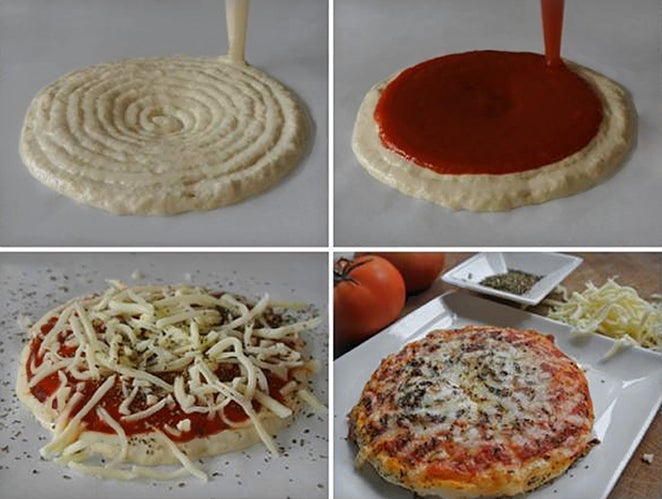Foodini: the £835 machine that 'prints' food in your kitchen
A Spanish start-up has created a 3D printer for food, expected to sell in 2014

You may have heard about the possibility of 3D printing your food when Nasa announced that they were exploring the technology, but now a Spanish start-up is looking to bring the same experience to your kitchen in 2014.
Barcelona-based Natural Machines have unveiled the Foodini, a 3D printer for food that is intended to sit next to your microwave and your toaster in your kitchen. The printing apparatus is loaded with any mixture of choice (dough, for example) and then it builds up the food layer by layer.
The device is expected to go on sale mid-2014 for £835, and Natural Machines’ co-founder Lynette Kucsma said she is hoping that families and restaurants will both want to get their hands on the device.
“Retail food stores have shown an interest. They can both print food in-store to sell to consumers as well as sell pre-filled food capsules for consumers to take home to use in their machines,” said Kucsma. “It could be an option to buy pre-filled capsules, put them in the machine and print.”

The company claims that the Foodini combines “technology, food, art, and design” but the technology still has many limitations. For a start it can’t actually cook the food (you’ll have to transfer any 3D printed creations to the oven or the pan) and it only works with a single ingredient at a time.
However, it does seem that 3D printing food has its own natural territory - areas of cuisine where it's more efficient than human hands. The ability to plug the printer into a computer means that all sorts of novelty patterns become simple to make, and certain foods like pizza (a foodstuff that is essentially a series of layers) look fairly convincing when printed out.
This could be one way forward for the 3D printer: corner a market in convenience foods, and then move into the mainstream. Could 3D printing a pizza be the Pot Noodle equivalent for students of the future? Well, not at Foodini's current prices, but given the industry's current pace of innovation, we might not have too long to wait.

Join our commenting forum
Join thought-provoking conversations, follow other Independent readers and see their replies
Comments
Bookmark popover
Removed from bookmarks